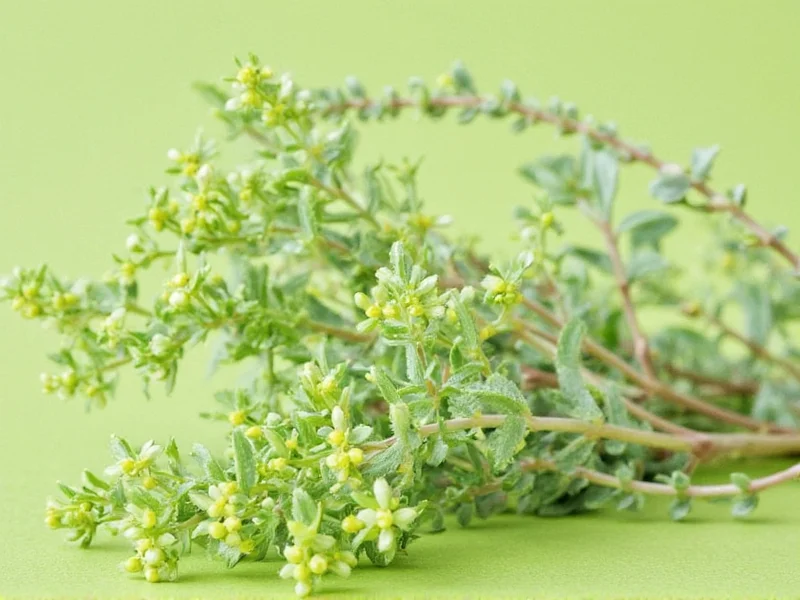If you've ever hesitated while reading a recipe aloud or felt uncertain about saying how is thyme pronounced correctly, you're not alone. Many home cooks and even professional chefs occasionally stumble over this common culinary herb's name. Understanding thyme pronunciation in English is essential for clear communication in kitchens, cooking classes, and food discussions.
The Correct Pronunciation Explained
The word "thyme" follows English's irregular spelling patterns, where the "th" is silent. Despite its spelling, it's pronounced identically to the word "time." Linguists classify this as a spelling pronunciation exception, where historical changes in language created a disconnect between spelling and sound.
For precise articulation:
- International Phonetic Alphabet (IPA): /taɪm/
- Phonetic spelling: "tahym" (rhymes with "lime")
- Audio reference: Reputable dictionaries like Merriam-Webster and Oxford list audio pronunciations confirming this standard
Why People Mispronounce Thyme
The confusion around how do you pronounce thyme stems from several factors:
| Mispronunciation | Reason for Error | Correct Alternative |
|---|---|---|
| "thahym" (TH-ime) | Applying standard "th" sound rules | "tahym" (silent "th") |
| "thyme" like "thick" | Confusing with other "th" words | "tahym" (soft "th" sound) |
| "thyme" like "thyme leaf" | Overcomplicating a simple word | "tahym" (one syllable) |
English contains many words where the "th" combination doesn't produce the expected sound. Consider "Thomas" (pronounced "Tomas") or "Thames" ("tems"). These exceptions developed through centuries of linguistic evolution, where pronunciation shifted while spelling remained fixed.
Historical Context of Thyme's Pronunciation
The word entered English around the 15th century from the Old French "thym," which came from Latin "thymum," and ultimately from Greek "thymon." Despite these origins with a clear "th" sound, English speakers gradually simplified the pronunciation to match common phonetic patterns.
This linguistic shift represents a broader pattern where English often simplifies foreign words to fit native pronunciation habits. Similar transformations occurred with words like "island" (originally "iland," with "s" added later based on Latin "insula") and "debt" (where the "b" was reintroduced based on Latin "debitum" despite not being pronounced).
Practical Tips for Confident Pronunciation
When discussing this herb in culinary contexts, remember these practical tips for thyme pronunciation guide for cooks:
- Practice saying "time" then replace the "t" with a very soft "th" sound
- Listen to audio pronunciations in reliable dictionaries
- Remember that professional chefs and cooking shows consistently use the "tahym" pronunciation
- Don't be misled by the spelling—many English words have silent letters
When in doubt, you can always reference authoritative culinary resources. The Food Network, Bon Appétit, and professional chef demonstrations consistently use the /taɪm/ pronunciation. This standard applies across both American and British English contexts.
Related Herb Pronunciations
While mastering how is thyme pronounced, you might encounter other herbs with tricky pronunciations:
- Oregano: or-ih-GAH-no (not or-ee-GAH-no)
- Ginger: JIN-jer (not GIN-ger)
- Coriander: kor-ee-AN-der (cilantro in Spanish, but different pronunciation)
- Rosemary: ROZ-mair-ee (not ROZE-mair-ee)
Understanding these distinctions helps avoid confusion in recipes and cooking discussions. The culinary world has standardized these pronunciations through decades of professional usage, making consistency important for clear communication.
Why Correct Pronunciation Matters in Cooking
While some might consider why is thyme pronounced differently than it's spelled unimportant, precise communication matters in culinary settings. Mispronunciations can lead to:
- Confusion in professional kitchens where speed is essential
- Misunderstandings when following verbal recipe instructions
- Unintentional errors when ordering ingredients
- Reduced credibility when discussing culinary techniques
Mastering correct pronunciation of culinary herbs demonstrates attention to detail—a valued trait in cooking. It also shows respect for culinary traditions and helps maintain clear communication across diverse cooking communities.
Final Thoughts on Thyme Pronunciation
The next time you're reading a recipe that calls for thyme, remember it's pronounced exactly like "time." This simple knowledge eliminates one small but persistent uncertainty in culinary communication. Whether you're a beginner cook or experienced chef, using the standard /taɪm/ pronunciation ensures you'll be understood by anyone familiar with cooking terminology.
Language evolves, but in the culinary world, certain pronunciations become standardized through common usage. The thyme vs time pronunciation difference isn't actually a difference at all—they sound identical. Embracing this linguistic quirk makes your cooking discussions smoother and more professional.
How do you pronounce thyme in a sentence?
In a sentence, thyme is pronounced like "time." For example: "Add one teaspoon of tahym (thyme) to the sauce." The word rhymes with "lime" and "mime," with the "th" being silent.
Is thyme pronounced the same as time?
Yes, thyme is pronounced exactly the same as time. Both words are pronounced /taɪm/ (tahym). Despite the "th" spelling in thyme, the "h" is silent, making it sound identical to the word "time."
Why is thyme not pronounced with a 'th' sound?
Thyme lost its "th" sound through historical linguistic evolution. Though derived from Greek "thymon" and Latin "thymum," English speakers gradually simplified the pronunciation to match common phonetic patterns, similar to how "Thomas" became "Tomas" and "Thames" became "tems."
Do chefs pronounce thyme differently than regular speakers?
No, professional chefs use the same pronunciation as standard English speakers—/taɪm/ (tahym). Culinary professionals consistently use this pronunciation in cooking shows, recipe demonstrations, and professional kitchen settings across both American and British English contexts.
Are there regional differences in how thyme is pronounced?
No significant regional differences exist for thyme pronunciation. Whether in American, British, Australian, or other English dialects, the standard pronunciation remains /taɪm/ (tahym). This consistency makes it one of the few culinary terms with universal pronunciation across English-speaking regions.











 浙公网安备
33010002000092号
浙公网安备
33010002000092号 浙B2-20120091-4
浙B2-20120091-4